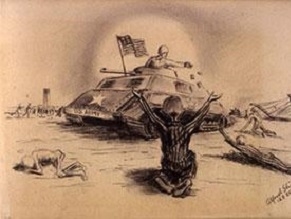|
World Jewish News

''The Anguish of Liberation as Reflected in Art, 1945-1947" displayed in the Yad Vashem Museum of Holocaust Art, will open on January 27
|
UN to mark International Holocaust Remembrance Day on January 27
20.01.2015 Chairman of Yad Vashem Avner Shalev will deliver the keynote address at a United Nations event marking International Holocaust Remembrance Day, on January 27, as well as the 70th Anniversary of the liberation of Auschwitz-Birkenau.
The event at the UN General Assembly will take place with the participation of UN Secretary General Ban Ki-moon, Israel's President Reuven Rivlin, survivors and liberators.
Yad Vashem will also open two new exhibitions – one to be displayed at the United Nations Headquarters in New York and the other at the Yad Vashem Museum of Holocaust Art in Jerusalem.
The new traveling exhibition "Shoah: How Was It Humanly Possible?" will open on January 26, 2015, at the United Nations Visitors' Lobby in New York City. The exhibition, which uses texts, images, and video clips to recount a comprehensive history of the Holocaust from 1933-1945, will remain on display at the United Nations through February 2015.
"The Anguish of Liberation as Reflected in Art, 1945-1947" displayed in the Yad Vashem Museum of Holocaust Art, will open on January 27, as part of a special evening marking International Holocaust Remembrance Day at Yad Vashem.
The evening will be held in conjunction with UNESCO, in the presence of dozens of diplomats and Thomas Geve, one of the survivor-artists. The exhibit, comprises works from the Yad Vashem Art Collection, features some 30 pieces produced at the time of liberation or in its immediate aftermath by 17 artists: 15 survivors, one liberator and one witness.
These artworks depict the moment of liberation, as well as the devastation and loss the survivors found upon their return. Consequently, some works give voice to feelings of suffering and turmoil, while others relate to the artists’ newly found sense of freedom.
EJP
|
|
